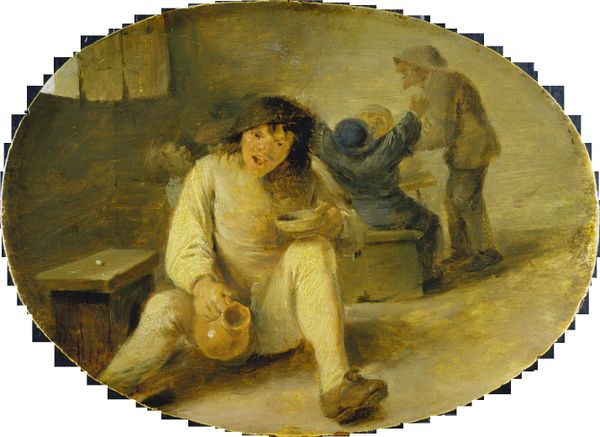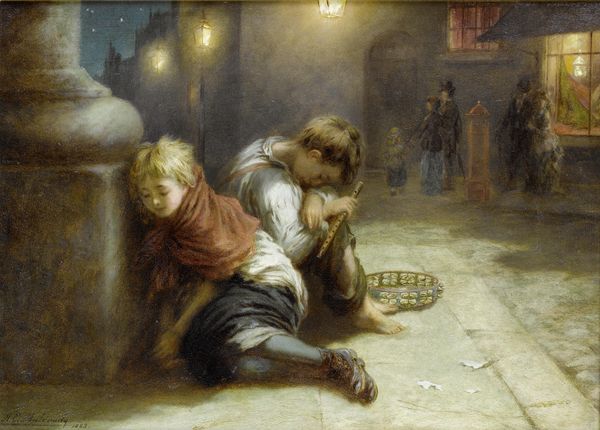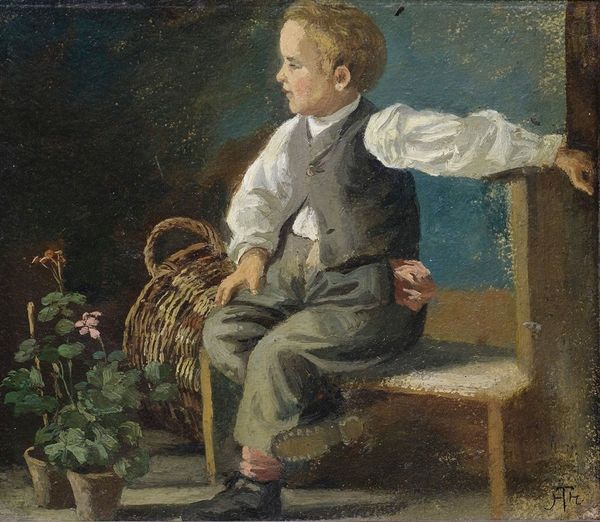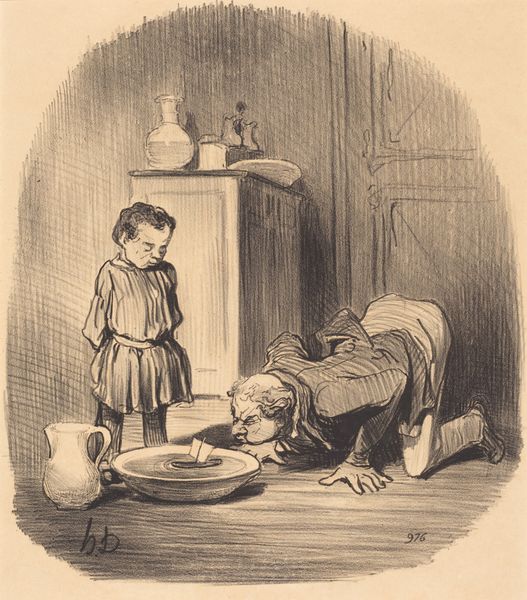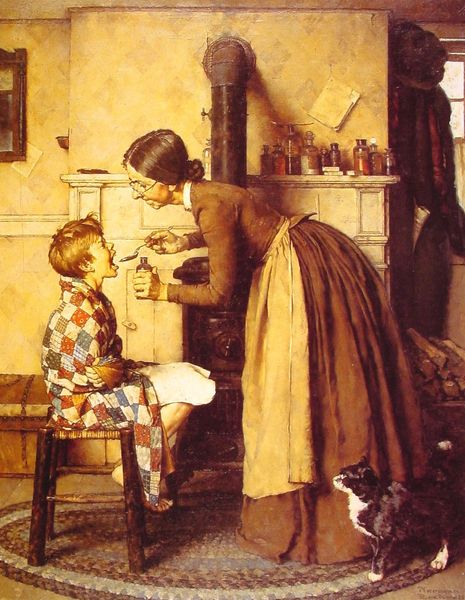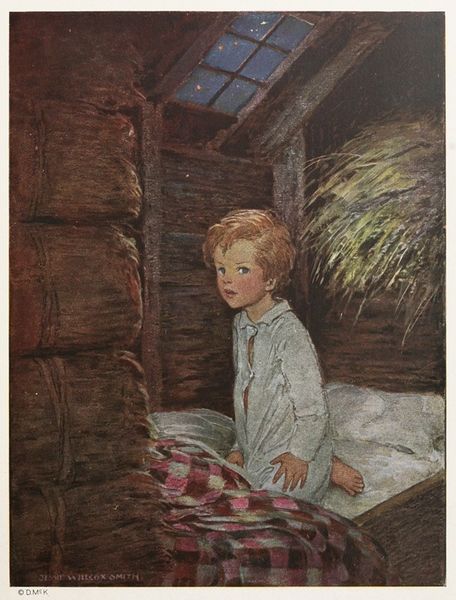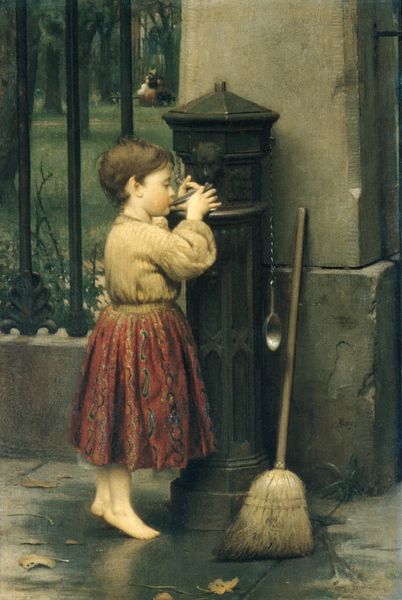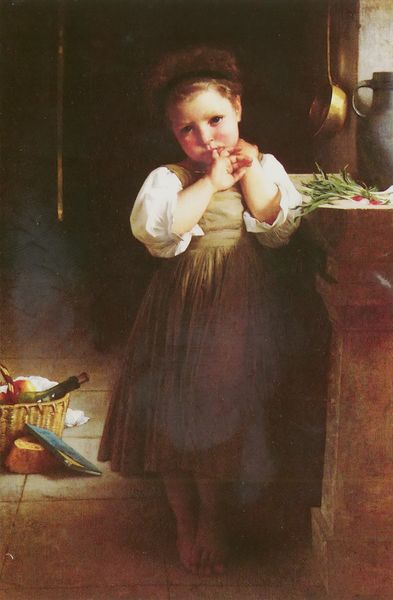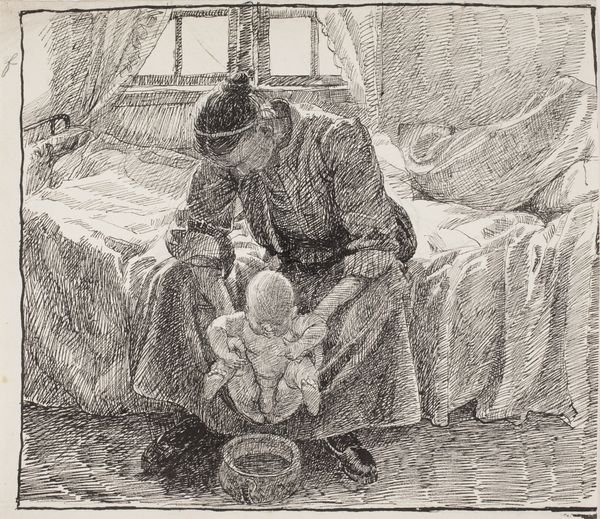
Copyright: Public domain
Curator: The painting before us is Theodor Kittelsen's "Askeladden's Adventure," created in 1900. Look closely at how he captured a moment of childhood wonder using oil paints. Editor: It strikes me as melancholic, actually. There's something about the subdued palette and the lone child, almost swallowed by the cavernous fireplace. Curator: Yes, the painting presents a visual vocabulary filled with signs and symbols. Notice how the small boy, seemingly playing by the fire, engages with something beyond mere entertainment. Consider Askeladden himself, a figure drawn from Norwegian folklore... Editor: Ah, yes, the underdog! Always underestimated, yet ultimately triumphant. This immediately reads as a commentary on social mobility, especially within agrarian communities where resourcefulness and wit are survival skills. Is the fireplace the family hearth? Curator: Quite possibly. The hearth traditionally represents home, warmth, and storytelling. It is an epicenter of both daily life and generational tales. But observe the boy’s intent focus, almost a ritualistic absorption, coupled with the somewhat mysterious creature perched nearby. What does that convey? Editor: Isolation, perhaps. The warmth of the fire contrasts the austerity of his life—making do with imagination in a confined, limiting setting. The small critter by the chair only emphasizes the solitary existence and potentially an escape into fantastical imagination to cope. Are there elements of intersectional inequity here? Curator: In Kittelsen’s rendition of the folklore, it presents a fascinating tableau of societal positions viewed through the lens of traditional narratives. The romantic era frequently draws from folk tradition to celebrate authentic and autochthonic virtues in an increasingly industrialized environment. There's a nostalgia evident for old ways, perceived purity. Editor: Definitely. This painting encapsulates the romanticizing of poverty, an element where sentimentality could obscure class tensions of the time. Yet I’m equally stuck by how Kittelsen has positioned the boy inside the house like it's a cave. Curator: It seems like he wants us to reflect on how tales are crafted from lived experience— and how symbols echo through both. It is powerful, what we remember and what traditions are reshaped and transmitted generationally. Editor: It absolutely makes me contemplate our place within the overarching narratives—who tells them, and whose stories get foregrounded, generation after generation.
Comments
No comments
Be the first to comment and join the conversation on the ultimate creative platform.
